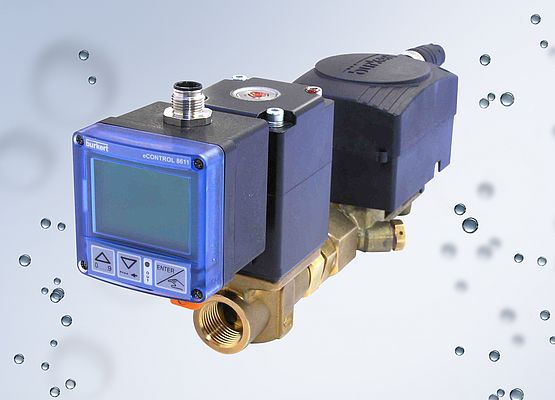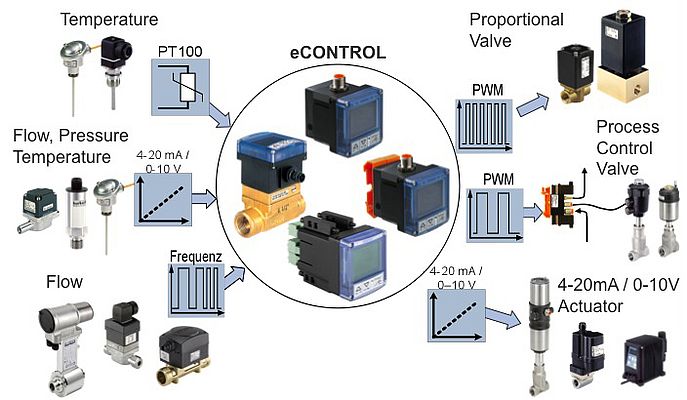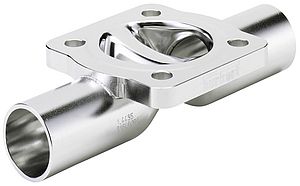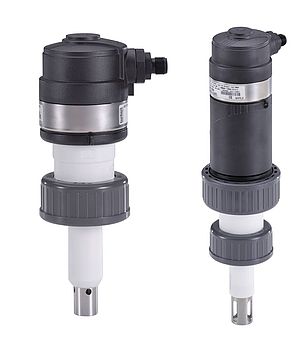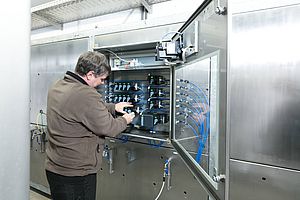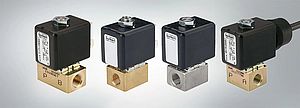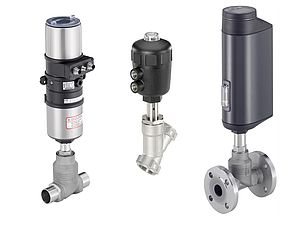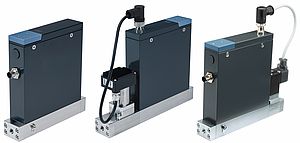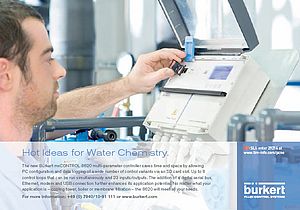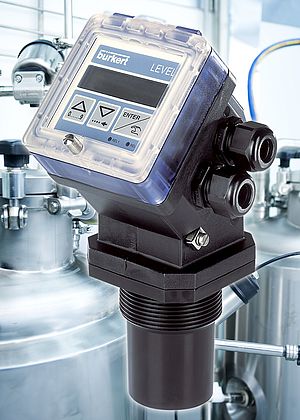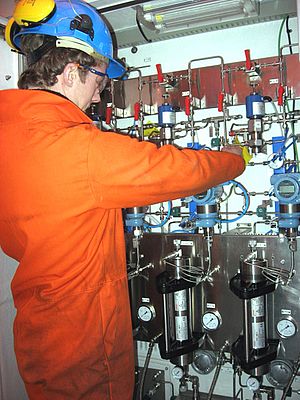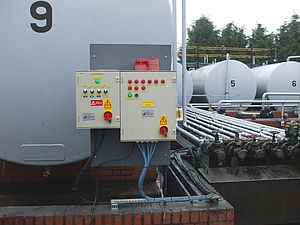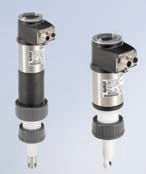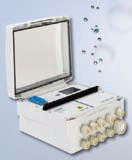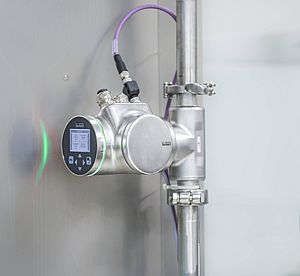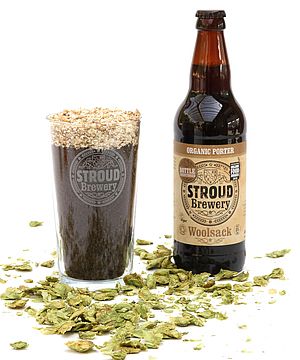In the commissioning of control systems, coordination problems between the selected individual components occur quite frequently. A new, integrated controller concept with pre-parameterized control systems and defined components prevents these problems and ensures fast, trouble-free commissioning.
Process engineers, project planners and system engineers today increasingly face the challenge of on-demand and customer-specific automation of complex systems in less time. The trend here is toward decentral control structures, in which decentral control tasks are integrated in the form of compact controllers in a master system controller. For many systems, this solution offers maximum flexibility with reduced expenditure for planning, wiring and configuration.
In addition to process-specific expertise, the project engineers also have to possess comprehensive knowledge of the selection and configuration of important components such as control valves, sensors or controllers. The selection and in particular the commissioning of these components are accordingly time-consuming, because it is usually necessary to configure different components from various manufacturers to build a complete system. The controllers, sensors and actuators used in the control systems are not initially configured to work together with respect to their dynamic behaviour and interfaces, which often results in compatibility problems. Different operating concepts of individual manufacturers also increase the complexity of the task. Often it is not clear until the time of commissioning whether the components have been correctly dimensioned and will function together optimally. If this is not the case, problems are inevitable: mutual accusations among the various component suppliers, delays in installation of the system and rising costs for the system suppliers can result.
Control systems consisting of different components
In general, control tasks in industrial applications can be described as follows. Based on a Set point (w) and the Controlled variable (feedback x from the sensor) the controller calculates a manipulatied variable (y), which opens or closes the control valve, therefore affecting the controlled system or the variable to be controlled. Typical control systems in industrial applications include applications such as the control of flow rates, pressure, temperature, filling levels, pH values, conductivity or the ratio between two fluid or gas flow. They are used wherever it is necessary to control fluids of all types, pressures in tanks or temperatures in heat exchangers.
For the parameterization of the controllers, information is needed from the controlled system, the control valve (e.g. process control valve, solenoid control valve, electric motor control valve, etc.) and from the sensor (pressure sensor, flow sensor, filling level sensor, etc.). This information often has to be collected tediously from different operating manuals. During the manual parameterization of the individual components the technician frequently is confronted with differing operating concepts of different manufacturers – which increases the time needed for commissioning and also presents an additional source of potential errors.
Reduced complexity through pre-parameterization
For the design of a closed loop control circuit, three components are needed: controller, sensor and control valve. For the configuration of the control circuit, one first needs to be aware of the controlled system (pressure, flow rate, temperature, etc.). Also, information on the standard signal, the frequency input (K factor) and the transfer response of the sensor is needed. This information is supplemented by the basic data on the control valve used – which can be an electro-pneumatic or electric motor control valve, a solenoid control valve or a simple on/off valve – and the respective valve control signal (PWM, 4-20mA, 0-10V).
This information is automatically retrieved in an intelligent, pre-parameterized control system during the initial configuration of the controller. Based on the selection made, in the subsequent input only the information relevant for the selected control system, sensor and actuator is available. To simplify this process, the product-specific information has already been defined in all essential proportional valves and sensors and only has to be selected in a configuration menu. The example of a typical flow control system shows how easy and time-saving an initial configuration can be. The depicted control system consists of a solenoid control valve, an ultrasonic flow sensor and a controller, which is mounted directly on the solenoid valve. The initial configuration of the controller consists of the following steps:
1. Selection of "flow control" as controlled system
2. Selection of "proportional valve" as control valve
3. Selection of valve type (e.g. Bürkert type 2835). The optimum piloting frequency for this valve type is automatically selected.
4. Selection of sensor input (Bürkert type 8081). The corresponding K factor is automatically selected based on the valve type and pipe size.
5. Selection of units to be displayed.
6. Scaling of set point input and process value output if necessary.
All necessary information on the control valve and sensor can be taken from the type plate without reference to the operating manual. After completion of these six steps, the essential parameters are defined in the controller and the start values of the PI control structure are automatically set based on the selected scaling. With these basic settings the user can immediately begin with the test of the control system.
One platform for diverse control tasks
On the basis of one high-performance universal controller for flow rate, pressure and temperature, this solution provides an extremely flexible control system which can be commissioned quickly and easily for a wide range of different industrial applications. Depending on the application, the compact controller can be mounted on a solenoid control valve, on the wall, top hat rail or in a switch cabinet. As an additional variant, it can also be mounted directly on the flow fitting. This enables an extremely compact flow control system for decentral automation of control functions within a plant.
The universal controller can be combined with a broad assortment of different valves and sensors for gases and fluids. The different valve piloting options (electric or pneumatic) and piloting signals (frequency, PWM, 4-20mA, 0-10V) were taken into account during the development of the compact controller. Moreover, the controller allows user-specific programming for special adaptation to the requirements of individual applications to create a customized control system.
Fig. 4 shows the integration of several different control systems within a switch cabinet. From left to right, the following control systems have been integrated: flow control system with direct acting proportional valve and ultrasonic flow sensor; flow control system with pilot-operated proportional valve and ultrasonic flow sensor; modular flow control system with paddle wheel sensor and pneumatic globe control valve for temperatures of up to 160 °C; control system with paddle wheel sensor and pneumatic glove control valve with positioner.
The same universal controller is used in all four control systems. The user therefore benefits in all applications from the advantages described above: a pre-parameterized control system, a standardized operating concept and reduction of the storage costs for different controller variants.
An integrated controller concept with pre-parameterized control system and defined information for the most common control valves and sensors offers many advantages in practice. This applies equally to OEMs and end users in industry, in the modernization of existing systems or optimization of existing processes. The selection of suitable components is simplified considerably, already in the planning phase. In comparison with conventional control systems, which are made up of components from different manufacturers, this system ensures from the very start that the controller, sensor and actuator harmonize with each other and will function together optimally in the control system. Commissioning is significantly faster, since the time-consuming search in sensor and valve documentation for the information required for the parameterization is eliminated. Compatibility problems and unpleasant surprises, such as malfunctions within the control system which are detected only upon commissioning, are a thing of the past.
Author
Dr. Egon Hüfner
Bürkert Segment Management Cooling
Optimized commissioning of control systems
Pre-parameterization of control systems facilitates their planning and commissioning
- by Bürkert Fluid Control Systems
- December 2, 2010
- 3978 views


